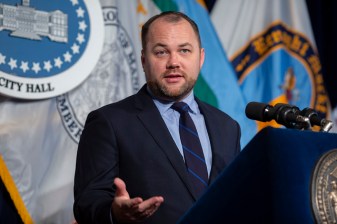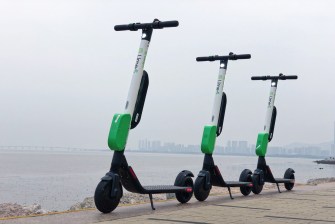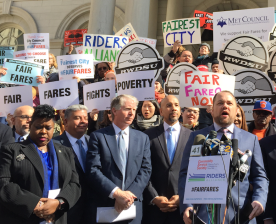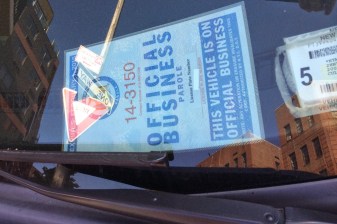City Council E-Bike/E-Scooter Legislation: What You Need to Know
Mayor de Blasio believes e-bikes are unsafe. Council Speaker Corey Johnson isn't a bill sponsor, but he's already pushing back.
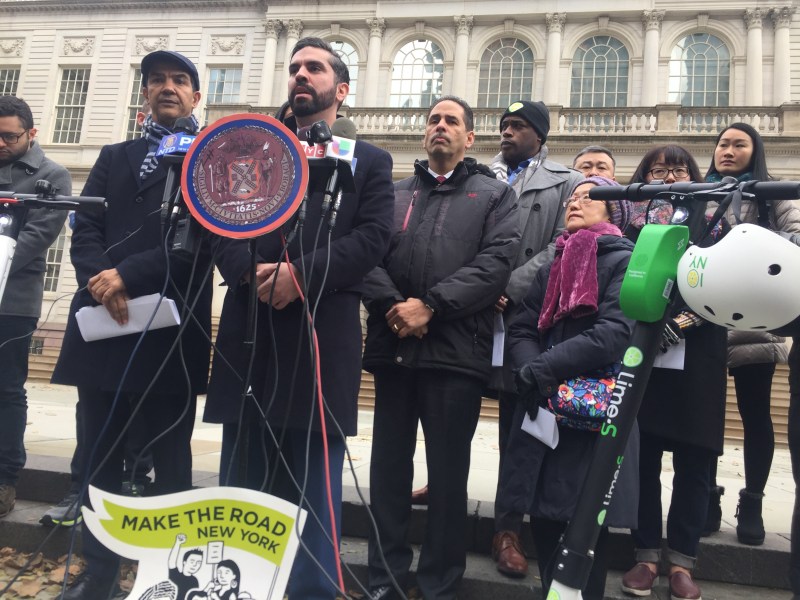
When it comes to the legalization of e-scooters and e-bikes, Mayor de Blasio is already peddling the bogus talking points of hysterical opponents who claim the Council bills introduced on Wednesday pose an inherent danger to pedestrians.
He should know better.
City agencies, after all, track traffic fatalities. As of the end of September, 145 people had been killed in crashes. Every single one of them was caused by a car driver, according to DOT.
“These are not morally or safety-equivalent things,” Council Speaker Corey Johnson told reporters today. “One is very deadly, one can injure people — but not in the same way as trucks and cars.”
Since last October, when the mayor announced that NYPD officers would crack down on the city’s mostly immigrant e-bike delivery workers, the city has yet to produce any data showing that e-bikes pose any danger to pedestrians.
De Blasio refuses to acknowledge that. Speaking to reporters Wednesday, he justified his position with anecdotes, not data.
“We have a safety issue that is quite clear to me,” the mayor said. “I’ve heard it from so many people in the city.”
With actual legislation finally on the table, the debate over the future of e-bikes and e-scooters is finally in full swing. Here’s what you need to know:
The Albany Question
The legislative package unveiled Wednesday by Council Members Rafael Espinal and colleagues comprises four bills:
- Intro. 1250 would legalize e-scooters and cap their speed at 15 mph.
- Intro. 1264 would legalize throttle-powered e-bikes and cap their speed at 20 mph. Both of those bills would also decrease the fine for operating an illegal e-bike or e-scooter from $500 to $100.
- Intro. 1266, would require that city DOT create a pilot program that sounds not unlike the one currently underway for dockless bike-share.
- Intro. 1265, would create a city-run program to provide the necessary resources for low-income workers — i.e., workers whose incomes do not exceed 200 percent of the federal poverty live — to make their bikes street-legal in accordance with Intro. 1264.
Without data to back up his claims about safety concerns, Mayor de Blasio tends to fall back on the fact the e-bikes are illegal under state law. He’s not incorrect: Federal law classifies certain types of e-bikes as bikes, as opposed to motor vehicles, but New York State law has never caught up.
The first two bills seek to exempt e-scooters and e-bikes from city rules prohibiting the use of “motorized scooters.” But the mayor may be right: Albany might need to act.
As such, Johnson wouldn’t give the bills an outright endorsement, but did say he’s “excited” about them. He also told reporters he hoped the council’s committee hearing process would help address the city vs. state issue.
“There are some legal concerns that we’re trying to sort through,” Johnson said, “but I still think it’s important to have a hearing on these bills.”
Step One for E-Scooters: A DOT Pilot Program
Intro. 1250 would legalize the e-scooters, but it wouldn’t give scooter companies carte blanche to drop their equipment willy-nilly all over the city.
The pilot would last from one to two years, and would focus on neighborhoods outside of the existing Citi Bike network or are affected by the L train shutdown.
Toward the end of the pilot period, DOT would be required to recommend whether to implement a permanent e-scooter-share program.
Material Support for Delivery Workers
Intro. 1265, which would get low-income workers resources to make their bikes street-legal, responds to concerns from delivery workers and their allies, who spent the greater part of this year arguing that the de Blasio administration’s move to legalize pedal-assist e-bikes unjustly penalized the city’s largely immigrant delivery workforce.
By and large, delivery workers use throttled-powered e-bikes, which are considered motorcycles under state law. The combination of fines, confiscated property, and lost wages means a single ticket can easily cost well over $1,000.
Since many delivery workers already own their e-bikes, many of which would exceed the 20 mph speed limit of Intro 1264, the Deliver Justice Coalition pushed Council Members to ensure workers won’t continue to face hefty financial penalties for doing their jobs.
Intro. 1265 would do just that.
E-Bike Champions Aren’t Protected Bike Lane Champions
E-scooter and e-bike proponents argue that the new technology will lead to a dramatic uptick in people biking and scootering around New York City. If that’s the case, we’re going to need a hell of a lot more protected bike lanes.

But the City Council’s e-bike champions aren’t all strong advocates of protected bike lane. Of the bill sponsors, only transportation committee chairman Ydanis Rodriguez has stuck out his neck for protected bike lanes in his Upper Manhattan district.
Speaking to reporters Wednesday, Rodriguez said he would push the de Blasio administration and City Council to double the number of protected bike lane miles installed each year, from the current 25.
“We need to keep expanding the protected bike lanes,” he said at a press conference alongside Espinal and others.
Other Council Members on hand were less bullish on the issue of protected bike lanes. Espinal said the city should continue its current rate of protected bike lane expansion. Bronx Council Member Fernando Cabrera, another bill co-sponsor, argued that more people biking and scootering would inevitably lead to safer infrastructure — putting the horse before the cart.
“We’re going to see an evolution of more bike lanes,” Cabrera said, “The culture of transportation is going to demand the infrastructure to catch up with it.”
